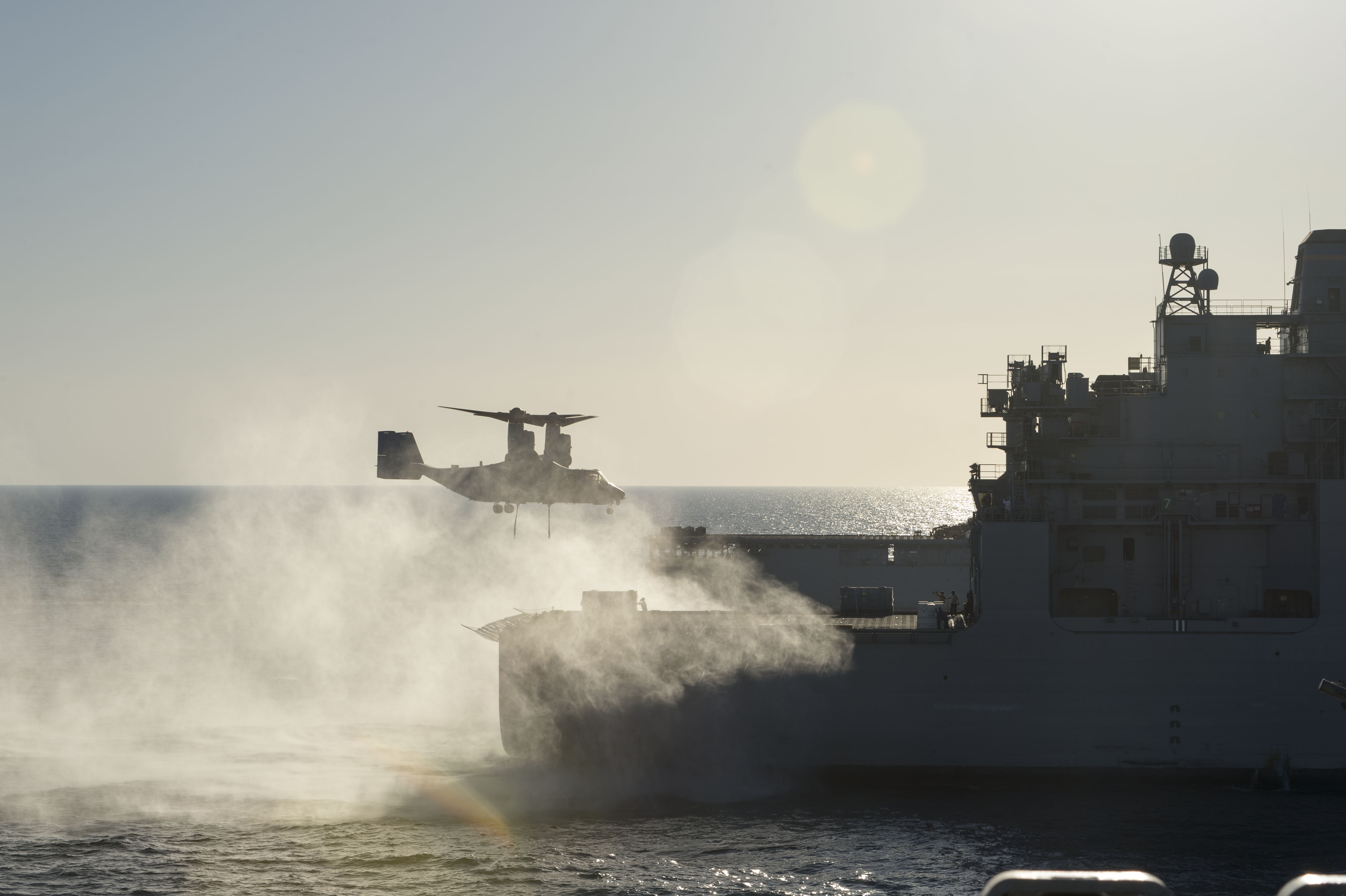
NATIONAL HARBOR, Md. – The Navy has stood up an Auxiliary Platforms and Payloads Council at the Pentagon to look at “new, innovative methods to fulfill the missions” the Navy and Marine Corps struggle to efficiently meet with current platforms, director of expeditionary warfare Maj. Gen. Robert Walsh said Tuesday.
Walsh said in a presentation at the Navy League’s Sea-Air-Space 2015 Exposition that the Navy was looking especially hard at finding new uses for the T-AKE cargo ship, Mobile Landing Platform (MLP) and Afloat Forward Staging Base (AFSB), the Large Medium-Speed Roll-on/Roll-off Ship (LMSR) and the Joint High Speed Vessel (JHSV).
The council was created not only to encourage ideas for new concepts of operations for these vessels, but also so that when an idea is presented it goes to the right people for efficient testing and implementation.
“When you come up with an idea for an initiative, everybody’s there … to kind of work those ideas and bring them to fruition,” Walsh said.
“Most of the resources sponsors are involved in it,” he added, to include chief of naval operations staff (OPNAV) working on doctrine, training, personnel, facilities and more, as well as the systems commands and program executive offices (PEOs).
Walsh offered as an example, flying a Bell-Boeing NV-22 Osprey from the LMSR. Not only would Naval Air Systems Command and the Marine aviation community be involved, but the PEOs for Integrated Warfare Systems and for Command, Control, Communications, Computers and Information (C4I) and the OPNAV N2/N6 information dominance directorate would also be looped in to work the command and control piece of the effort.
Walsh said there was no money set aside for experiments, but the chief of naval operations and the commandant of the Marine Corps have give their authority to move forward on these innovation efforts and find money where possible to quickly develop tests and determine if these alternative operations ideas are viable.





